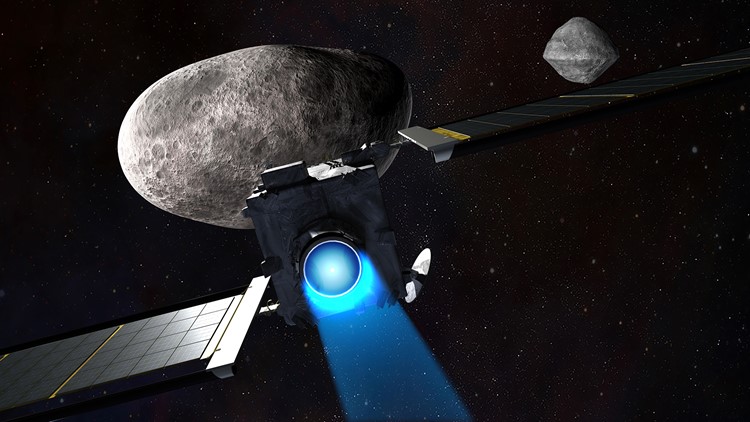The stuff of science fiction movies may soon become real as asteroid observers and spacecraft engineers meet next week to discuss a mission to deflect an asteroid. The craft that will do it is already under construction.
The European Space Agency says experts from the U.S., Europe and other countries will meet in Rome for an update on their planned mission -- sending a spacecraft to a nearby asteroid to crash into it and change its course.
The mission is called the Asteroid Impact Deflection Assessment (AIDA). A spacecraft would collide with the asteroid at more than 13,000 mph while a second craft would arrive to take readings about the impact.
The target is the binary asteroid Didymos, located between Earth and Mars. It's actually two asteroids -- a smaller one orbiting its larger companion. The big one is about a half-mile across while the other is the size of Egypt's Great Pyramid.
"Just the seemingly tiny moon would be big enough to destroy a city if it were to collide with the Earth," said astrophysicist Brian May -- who also happens to be the lead guitarist of the rock band Queen -- in a video explaining the mission.
The first spacecraft, Double Asteroid Impact Test (DART) would impact the smaller of the two Didymos asteroids. DART is already being built by NASA. The launch is tentatively planned for the summer of 2021 with impact happening in September 2022.
The second spacecraft, Hera, is being built by the ESA. It will get a close-up look at the effect of DART's impact crater and measure the asteroid's mass, and ultimately help determine how efficient the mission was. Hera will also launch two smaller satellites called CubeSats that will be able to take closer readings and land on the rock.
The ESA said Hera won't launch until 2024 and will arrive at Didymos two years later. And even if it can't go, the ESA says ground observers will still be able to see if the collision worked.
The reason DIdymos was chosen is that, once DART crashes into the smaller rock, researchers will be able to see the impact on its orbit compared to the larger asteroid. The ESA said would be harder to see the results on a lone asteroid traveling in orbit of the sun.



